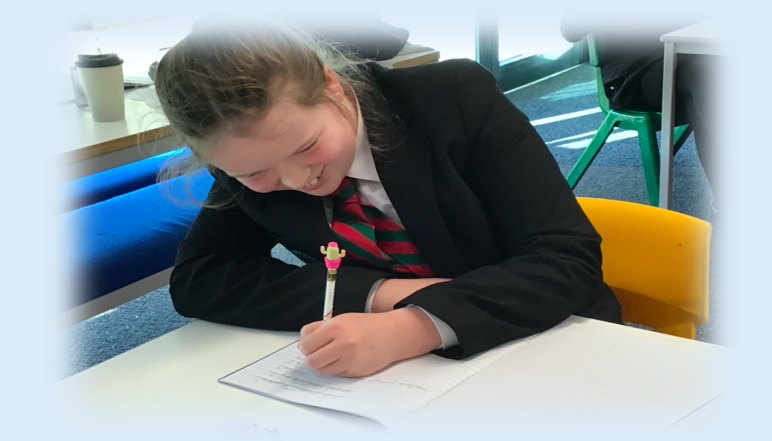Writing at St Joseph's Primary

Writing
At St Joseph's Primary School, we have based our approach on "The Write Stuff" by Jane Considine to bring clarity to the mechanics of writing. "The Write Stuff" follows a method called "Sentence Stacking" which refers to the fact that sentences are stacked together chronologically and organised to engage children with short, intensive moments of learning that they can then immediately apply to their own writing. An individual lesson is based on a sentence model, broken in to 3 learning chunks. Each learning chunk has three sections:
- Initiate section – a stimulus to capture the children’s imagination and set up a sentence.
- Model section – the teacher close models a sentence that outlines clear writing features and techniques.
- Enable section – the children write their sentence, following the model.
Children are challenged to ‘Deepen the Moment’ which requires them to independently draw upon previously learnt skills and apply them to their writing during that chunk.
"The Write Stuff" uses three essential components to support children in becoming great writers
The three zones of writing :-
- IDEAS - The FANTASTICs uses a child friendly acronym to represent the nine idea lenses through which children can craft their ideas.
- TOOLS - The GRAMMARISTICS. The grammar rules of our language system and an accessible way to target weaknesses in pupils grammatical and linguistic structures.
- TECHNIQUES - The BOOMTASTICs which helps children capture 10 ways of adding drama and poetic devices to writing in a vivid visual.

Writing in the Early Years
It all begins by making our mark! We encourage the children to make marks in all kinds of different environments: mud, sand, paint and on chalk boards. We then focus on applying our phonics knowledge, thinking about the correct way to form letters. When we are ready to write, we start by hearing and writing the initial sound in words, then move on to writing CVC words and ending the year with the target of writing simple sentences. When writing sentences, it is important that we remember to start with a capital letter, separate our words with finger spaces, put our letters on the line and remember a full stop at the end. When supporting the children to write, we encourage them to write all of the sounds that they can hear and use a sound mat if they can’t remember what the sound looks like when it is written. We also teach ‘tricky words’ which are words that cannot be sounded out.
.png)
.png)
What Writing Looks Like in the Early Years
When writing, there are different levels that children achieve:
|
Level 1 |
Making marks, this is where your child will do lines and circles to describe what they have drawn and will tell you what they have written. Please write what they have said "That says I want to ride my bike." | |
|
Level 2
|
Identifying the initial sound in the words, this is where your child will hear a "b" in bike and write that sound. |  |
|
Level 3
|
Identifying more sounds in words e.g. "b-i-k" in bike and writing these sounds. | |
|
Level 4
|
Beginning to write sentences using the sounds they hear in words. E.g. "I wont to rid my bik." This sentence is written as if a child has heard and identified the dominant sounds. |
At this stage, please do not worry about spelling. We want your children to write the sounds they can hear.
Spelling
Spelling is taught through the Spelling Shed scheme. In each year group, children will be taught specific spelling rules which they will build on and use throughout the scheme.
Spelling is taught through a range of strategies including fun activities and games to embed the spelling rules and list taught for that year group. These strategies include Battleships, The Spelling Web, Scrabble, Memory Challenge, Spelling Search and Crosswords.
Key Stage Spelling Lists
The 2014 National Curriculum identifies spelling lists that every child in each Key Stage of primary school needs to know by the end of that Key Stage. It is expected that by the end of Key Stage 1 children know the example words for year 1 and 2, as well as including almost all exception words which are used frequently in pupils’ writing. The word lists for Years 3 and 4 and Years 5 and 6 are statutory. These lists include a mixture of those words children use in their writing as well as those that are often misspelt.


.jpg)